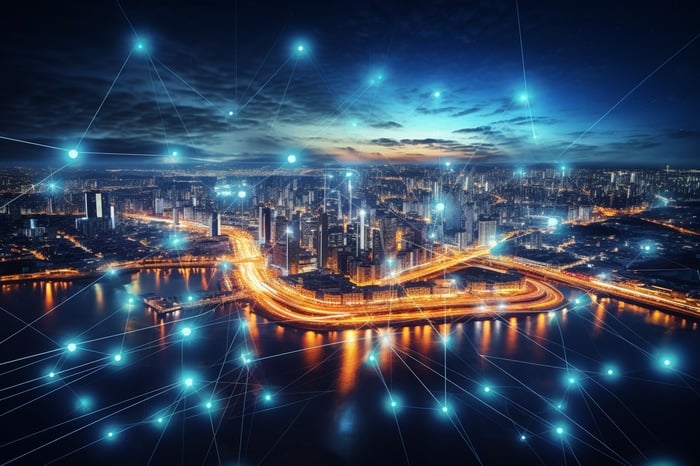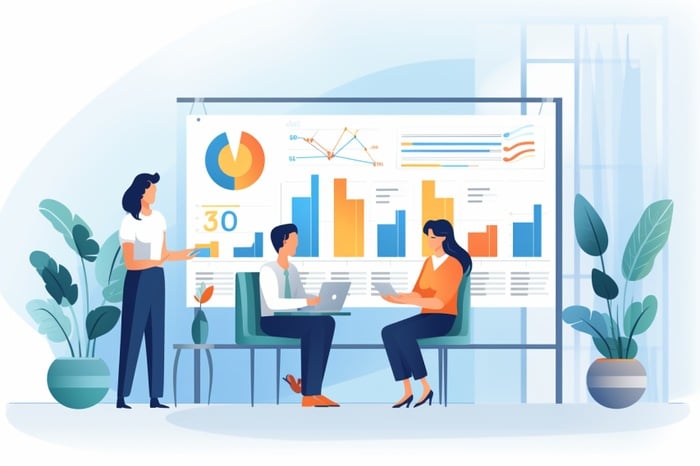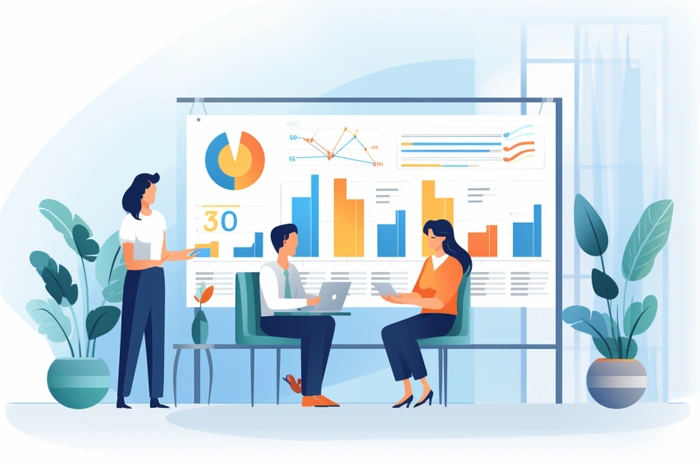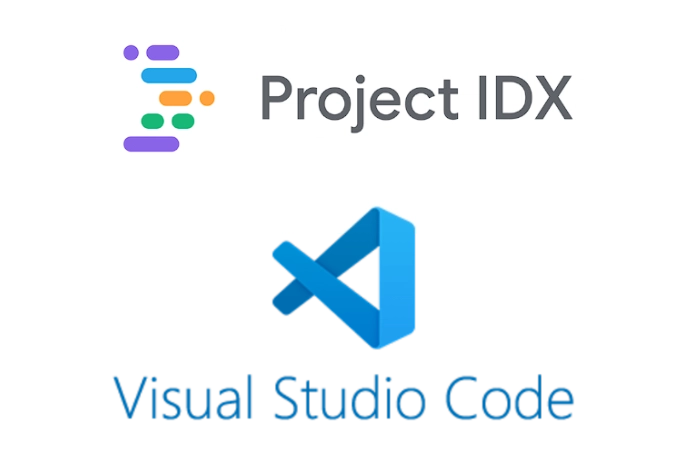
Author: admin


Introduction:
In the digital age, the hosting industry has seen a revolution with the advent of Cloud VPS hosting. Companies are on the constant lookout for solutions that are both reliable and scalable. Enter “Cloudzy” – a brand that promises not just a service, but a transformative experience.
Why Choose Cloudzy’s Cloud VPS Hosting?
Higher Reliability and Next-gen Technology:
With the ongoing demand for online presence, it’s crucial to have a hosting solution that doesn’t let you down. Cloud VPS hosting by Cloudzy is based on cutting-edge technology, ensuring that businesses remain up and running without any hiccups. With a 99.95% uptime, Cloudzy stands tall in its promise of higher reliability.
Scalability at Its Best:
Growth is unpredictable. Some days your website might witness a sudden surge of visitors, and on others, it might be just your regular audience. Cloudzy’s Cloud VPS hosting offers unmatched scalability. Whether you’re a small business or a large enterprise, Cloudzy ensures that your hosting environment grows with you.
Main Features of Cloudzy’s Cloud VPS Hosting:
Pay as You Go: Gone are the days when you had to commit to long-term plans without understanding your own requirements. Cloudzy’s flexible “Pay as You Go VPS” model ensures that you only pay for what you use, providing cost-effective solutions tailored to your needs.
User-friendly Control Panel: Navigating through hosting panels can be a daunting task, especially for beginners. Cloudzy’s user-friendly control panel ensures that even those new to hosting can manage their websites with ease.
Commitment to Uptime: A 99.95% uptime guarantee speaks volumes about Cloudzy’s commitment to keeping your website accessible to your users round the clock.
24/7 Online Support: Issues can arise at any hour of the day. Cloudzy’s dedicated 24/7 online support ensures that you always have a team to rely on, no matter the time.
Conclusion:
When it comes to Cloud VPS hosting, it’s clear that Cloudzy is not just another service provider. They offer a novel experience, focusing on reliability, scalability, and harnessing the power of next-gen technology. Starting at just $4.95, becoming a part of the Cloudzy family means you’re choosing the best for your online endeavors. Embrace the future of hosting with Cloudzy.

In the ever-evolving landscape of web development, Google has recently unveiled a new initiative, Project IDX. This browser-based development experience is built on Google Cloud and is powered by Codey, a foundational AI model trained on code and built on PaLM 2. The primary aim of Project IDX is to simplify the process of building, managing, and deploying full-stack web and multiplatform applications. It supports a wide range of popular frameworks and languages, making it a versatile tool for developers.
Project IDX is also built on Code OSS, which means it should feel familiar to developers, regardless of the project they are working on. This familiarity is a key aspect of Project IDX, as it allows developers to seamlessly transition between different projects and frameworks.
In the broader context, Project IDX represents Google’s attempt to compete with Microsoft in the developer ecosystem. By offering a versatile, cloud-based development environment, Google is positioning itself to try and regain popularity among developers.
Google Project IDX vs Visual Code Studio
One of the standout features of Project IDX is its integration with GitHub. Developers can import their existing projects from GitHub, allowing them to continue their work without interruption. Additionally, Project IDX offers pre-baked templates for popular frameworks such as Angular, Flutter, Next.js, React, Svelte, Vue, and languages like JavaScript, Dart, and more. Google has also announced that support for Python, Go, and other languages is on the horizon.
Other articles you may find of interest on the subject of Visual Code Studio :
Google recognizes that developers spend a significant amount of time writing code, and with recent advances in AI, there are substantial opportunities to make this time more productive. To this end, Project IDX incorporates Google’s innovations in AI, including the Codey and PaLM 2 models. These AI models, which also power Studio Bot in Android Studio and Duet in Google Cloud, can help developers write code faster and improve the quality of their code.
Currently, Project IDX offers smart code completion, an assistive chatbot, and contextual code actions like “add comments” and “explain this code”. Google acknowledges that these AI capabilities are in their early stages, but they are committed to enhancing IDX AI to better assist developers in their work.
Google Project IDX
Project IDX is hosted on Google Cloud Server, providing a cloud-based development environment. It uses a VS Code-like editor and runs computations on a server, eliminating the need for a high-performance computer on the user’s end. This feature sets Project IDX apart from traditional development environments and aligns it with existing cloud-based environments like Replit and Microsoft’s Visual Studio Code Spaces.
The deep integration of Project IDX with Google’s development offerings, such as Flutter and Firebase, is another noteworthy aspect. This integration allows developers to leverage Google’s robust development tools, further enhancing the capabilities of Project IDX.
Project IDX is a promising new initiative from Google. Its cloud-based nature, integration with popular frameworks and languages, and AI-powered features make it a compelling tool for developers. As Google continues to refine and expand Project IDX, it will be interesting to see how it shapes the future of web and multiplatform app development. Project IDX is a promising new initiative from Google. Its cloud-based nature, integration with popular frameworks and languages, and AI-powered features make it a compelling tool for developers. As Google continues to refine and expand Project IDX, it will be interesting to see how it shapes the future of web and multiplatform app development.
Filed Under: Guides, Top News
Latest timeswonderful Deals
Disclosure: Some of our articles include affiliate links. If you buy something through one of these links, timeswonderful may earn an affiliate commission. Learn about our Disclosure Policy.


This guide will show you how you can use Google Bard to organize your digital life. To begin your journey with Google Bard, the first step is to establish a Google account if you haven’t already done so. Having a Google account is essential as it serves as the gateway to accessing Bard and a host of other Google services.
Once your Google account is set up and ready to go, you have two primary methods to interact with Bard: through the Google Search bar or via Google Assistant (Please note this feature is not live yet.)
If you opt for the Google Assistant route, the process is incredibly straightforward. All you need to do is activate your Google Assistant by saying, “Hey Google,” followed by the command, “talk to Bard.” Upon hearing this, Google Assistant will initiate Bard, allowing you to dive right into asking questions or issuing commands to this service. Please note this feature is not live yet and is coming in the future.
Alternatively, if you prefer to use the Google Search bar to access Bard, the procedure is equally simple. Navigate to the Google Search bar on your device and type in the keyword “Bard.” After hitting the enter key, Bard will be activated, presenting you with the opportunity to interact with it through a variety of queries or commands.
Organizing Your To-Do Lists
To use Bard to organize your to-do lists, simply say something like “Bard, create a to-do list for me”. Bard will then create a new to-do list and ask you what you want to add to it. You can then add items to the list by saying something like “Add buy groceries to my to-do list”.
Bard can also help you to prioritize your to-do list. Simply say something like “Bard, prioritize my to-do list” and Bard will move the most important items to the top of the list.
Taking Notes
To use Bard to take notes, simply say something like “Bard, take a note for me”. Bard will then start recording your notes. You can then say whatever you want to add to your notes.
Bard can also help you to organize your notes. Simply say something like “Bard, organize my notes by topic” and Bard will create folders for your notes based on their topic.
Managing Your Calendar
To use Bard to manage your calendar, simply say something like “Bard, add an appointment to my calendar”. Bard will then ask you for the details of the appointment. You can then say things like “The appointment is with my doctor on March 15th at 10 am”.
Bard can also help you to find events on your calendar. Simply say something like “Bard, what events do I have next week?” and Bard will tell you all of the events that are on your calendar for the next week.
Creating and Sending Emails
To use Bard to create and send emails, simply type something like “Bard, write an email for me”. Bard will then start creating an email. You can then say whatever you want to add to the email.
Bard can also help you to send emails. Simply say something like “Bard, send this email” and Bard will send the email.
Researching Information
To use Bard to research information, simply say something like “Bard, what is the capital of France?”. Bard will then search the web for the information and tell you the answer.
Bard can also help you to find specific information. Simply say something like “Bard, find me articles about the latest research on climate change” and Bard will find articles on the web that match your criteria.
Creating Presentations
Bard can also help you to format your presentation. Simply say something like “Bard, make my presentation look professional” and Bard will format your presentation in a way that looks professional.
Other Ways to Use Bard to Organize Your Digital Life
These are just a few of the ways that you can use Google Bard to organize your digital life. As Bard continues to develop, it will be able to do even more things to help you stay organized and productive.
Here are some other ideas for how you can use Bard:
- Use Bard to create a shopping list.
- Use Bard to track your expenses.
- Use Bard to plan your meals.
- Use Bard to write a blog post.
- Use Bard to translate languages.
- Use Bard to write code.
- Use Bard to brainstorm ideas.
Here are some tips for using Google Bard to organize your digital life:
- Be specific in your requests. The more specific you are, the better Bard will be able to understand what you want.
- Use natural language. You don’t need to use technical terms or jargon. Just talk to Bard like you would talk to a friend.
- Be patient. Bard is still under development, so it may not always get things right. But it is learning all the time.
Summary
Google Bard is a powerful tool that can be used to organize your digital life in many ways. It is still under development, but it is already learning to do many things that can help you save time and be more productive. If you are looking for a way to get organized, I encourage you to give Google Bard a try. It is free to use and it is available to anyone with a Google account. We hope that you find our guide on how to use Google Bard to organize your digital life helpful, if you have any questions, suggestions or comments, please let us know in the comments section below.
Here are some more useful Google Bard articles you may find interesting:
Image Credit: Marvin Meyer
Filed Under: Guides
Latest timeswonderful Deals
Disclosure: Some of our articles include affiliate links. If you buy something through one of these links, timeswonderful may earn an affiliate commission. Learn about our Disclosure Policy.

In the realm of digital artistry, the creation of animated scenes is a skill that requires both creativity and technical prowess. This quick guide and tutorial kindly created by freelance video editor and content creator Ryan Collins who is a master at creating animations using AI art. Will provide an overview of how to creating such scenes using two powerful tools: Adobe Suite and Midjourney.
Midjourney is an AI art generator that has been making waves in the digital art community. It’s a platform that allows users to generate unique pieces of art using artificial intelligence, similar to that provided by other AI art generator such as Stable Diffusion XL and others. On the other hand, Adobe Suite is a collection of software used for graphic design, video editing, web development, and more. It includes programs like Photoshop and After Effects, which are essential tools for creating animated scenes.
Adobe Suite is a versatile tool that can handle a wide range of file formats. This makes it easy to import the images generated by Midjourney. Once the images are imported, they can be manipulated in various ways to create the desired animation effects. This is where Photoshop comes into play.
How to create animated videos using Midjourney
The first step in this process is setting up and using Midjourney. This involves creating an account, familiarizing oneself with the interface, and understanding the different features available. Midjourney offers a variety of options for customization, allowing users to create art that is truly their own. Once the user has generated their desired piece of art, it’s time to move on to the next step: importing the images into Adobe Suite.
Other articles you may find of interest on the subject of Midjourney animation and AI art generator
Photoshop
Photoshop is a powerful image editing software that allows users to cut and layer images. This process involves selecting specific parts of an image and placing them on different layers. By doing this, users can create a sense of depth and dimension in their scenes. This is a crucial step in the creation of animated scenes, as it sets the foundation for the animation process.
After Effects
After the images have been cut and layered in Photoshop, it’s time to bring them to life using After Effects. After Effects is a digital visual effects and motion graphics software that is used in the post-production process of film making, video games, and television production. It allows users to animate their images, adding movement and dynamism to their scenes. Users can animate individual layers, creating a sense of movement and depth that brings their scenes to life.
Final Render
The final step in this process is adding sound effects and rendering the final product. Sound effects can add an extra layer of immersion to the scenes, enhancing the overall experience for the viewer. Once the sound effects have been added, the scene can be rendered. Rendering is the process of generating a high-quality video from the animated scene. This can be done in After Effects, resulting in a final product that is ready to be shared and enjoyed.
Creating animated videos and scenes using Adobe Suite and Midjourney is a process that involves several steps. From setting up and using Midjourney to importing images into Adobe Suite, cutting and layering images in Photoshop, animating images in After Effects, and adding sound effects and rendering the final product. Each step plays a crucial role in the creation of a captivating animated video or scene and shows that with the right tools and a bit of creativity, anyone can create amazing animations using AI generated art and software tools that already available.
Filed Under: Guides, Top News
Latest timeswonderful Deals
Disclosure: Some of our articles include affiliate links. If you buy something through one of these links, timeswonderful may earn an affiliate commission. Learn about our Disclosure Policy.

Thanks to the explosion of large language models both open source and those released by companies such as OpenAI, Stability AI and others, Autonomous AI agents have emerged as a significant area of interest and advancement for a wide variety of different applications.
These agents, defined by their ability to operate independently, make decisions, and perform tasks without human intervention, are poised to revolutionize various sectors, from content creation to finance. This article delves into the functionality of autonomous AI agents, their potential applications, and the framework for building such systems. It also explores the potential future of AI agents in various industries, with examples of AI agent systems like AutoGPT and BabyAGI.
“BabyAGI is an example of an AI-powered task management system. The system uses OpenAI and vector databases such as Chroma or Weaviate to create, prioritize, and execute tasks. The main idea behind this system is that it creates tasks based on the result of previous tasks and a predefined objective. The script then uses OpenAI’s natural language processing (NLP) capabilities to create new tasks based on the objective, and Chroma/Weaviate to store and retrieve task results for context. “
Autonomous AI Agents and their potential applications
Autonomous AI agents are essentially self-governing entities within a system. They are designed to perceive their environment, process information, and take actions to achieve specific goals. These agents are not merely reactive; they possess the ability to learn from their experiences and adapt their strategies accordingly. This ability to learn and adapt is what sets them apart from traditional software and makes them a powerful tool in various fields.
Other articles you may find of interest on the subject of building AI agents and how they can be used to help automate workflows and more :
One of the most promising applications of autonomous AI agents is in the field of content creation. These agents can generate text, images, and even videos, offering a new way to create content that is both efficient and cost-effective. For instance, AI agents can be used to write articles, design graphics, or produce promotional videos, freeing up human creators to focus on more complex tasks.
Workflow automation
In the realm of personal assistance, autonomous AI agents can perform tasks ranging from scheduling appointments to managing emails. They can also provide personalized recommendations based on user preferences, making them an invaluable tool for enhancing productivity and efficiency.
The gaming industry is another sector where autonomous AI agents hold immense potential. They can be used to create intelligent non-player characters (NPCs), design complex game environments, or even develop entire games. The use of AI agents in gaming not only enhances the gaming experience but also opens up new possibilities for game design and development.
In the finance sector, autonomous AI agents can analyze vast amounts of data to make predictions, identify trends, and provide insights. They can also automate trading activities, manage portfolios, and even advise on investment strategies. The use of AI agents in finance can lead to more informed decision-making and improved financial outcomes.
Building AI agents
Building an autonomous AI agent system requires a robust framework that can support the agent’s learning and decision-making processes. This includes a learning algorithm that allows the agent to learn from its experiences, a decision-making mechanism that enables it to make informed decisions, and a reward system that encourages the agent to achieve its goals. Here a few other articles that delve deeper into how to build your very own AI agents :
The potential future of AI agents in various industries is vast. Systems like Auto GPT and Baby AGI are just the tip of the iceberg. As AI technology continues to evolve, we can expect to see more sophisticated AI agents that can perform increasingly complex tasks.
The transformative potential of autonomous AI agents in various sectors is undeniable. From content creation to finance, these agents are set to revolutionize the way we work, play, and interact with the world. As we continue to explore the possibilities of AI, the role of autonomous AI agents will undoubtedly become increasingly significant.
Filed Under: Guides, Top News
Latest timeswonderful Deals
Disclosure: Some of our articles include affiliate links. If you buy something through one of these links, timeswonderful may earn an affiliate commission. Learn about our Disclosure Policy.


In the ever-evolving landscape of technology, one of the most intriguing advancements is the rise of generative AI. This technology, which has the ability to create new content from existing data, is transforming various sectors, including marketing. This article delves into the impact and potential of generative AI in the field of marketing, exploring its evolution, capabilities, and future prospects.
Generative AI has come a long way since its inception. Initially, it was primarily used to generate simple content such as text or images. However, with advancements in machine learning and data processing, generative AI has evolved to create more complex and nuanced content. This evolution has opened up new possibilities for its application in various fields, including marketing.
In the realm of marketing, generative AI is being used to automate tasks that were once manual and time-consuming. For instance, it can generate personalized email content, social media posts, and even advertising copywriting, tailored to the preferences and behaviors of individual consumers. This level of personalization, which was once a labor-intensive process, can now be achieved at scale, thanks to generative AI.
Generative AI in marketing
The potential of generative AI in automating marketing tasks is immense. It can analyze vast amounts of data to identify trends and patterns, enabling marketers to make data-driven decisions. Furthermore, it can test different marketing strategies in virtual environments, providing insights into their potential effectiveness before they are implemented in the real world. This ability to predict and optimize marketing strategies can significantly enhance the efficiency and effectiveness of marketing campaigns.
Automate the boring stuff
Other articles you may find of interest on the subject of automating business workflows and generative AI :
The growth and development of the generative AI sector have been remarkable. More and more companies are investing in this technology, recognizing its potential to revolutionize marketing. However, this rapid growth has also raised concerns about job security in the marketing sector. As generative AI automates more tasks, there is a fear that it could render some marketing jobs obsolete.
Generative AI as a tool
While these concerns are valid, it’s important to note that generative AI is not meant to replace humans but to augment their capabilities. It can take over mundane and repetitive tasks, freeing up marketers to focus on more strategic and creative aspects of their work. Moreover, the rise of generative AI is likely to create new job opportunities in areas such as AI development, data analysis, and ethical oversight.
The use of generative AI also raises ethical and legal considerations. For instance, there are questions about the ownership of content generated by AI and the potential misuse of this technology. It’s crucial for companies to navigate these issues responsibly, ensuring that their use of generative AI aligns with legal guidelines and ethical standards.
The personal and emotional impact of generative AI on creators is another area of interest. As AI becomes more capable of creating content, it could potentially diminish the value of human creativity. However, it’s important to remember that AI is a tool, not a replacement for human creativity. It can generate content based on existing data, but it cannot replicate the unique insights, emotions, and experiences that humans bring to their creations.
Looking ahead, the future prospects of generative AI in marketing are promising. As this technology continues to evolve, it’s likely to become an integral part of more marketing strategies, driving personalization, efficiency, and data-driven decision-making. However, it’s also important for companies to approach this technology with caution, considering its ethical, legal, and emotional implications.
Generative AI is transforming marketing in profound ways. Its ability to automate tasks, analyze data, and generate content holds immense potential. However, it’s crucial for companies to navigate the challenges and considerations that come with this technology responsibly. As we move forward, the role of generative AI in marketing is likely to grow, shaping the future of this field in exciting and unpredictable ways.
Filed Under: Guides, Top News
Latest timeswonderful Deals
Disclosure: Some of our articles include affiliate links. If you buy something through one of these links, timeswonderful may earn an affiliate commission. Learn about our Disclosure Policy.
How to use ChatGPT to learn photography


This guide is designed to show you how you can use ChatGPT to learn photography. In an era where technology permeates every facet of our lives, the field of photography has also witnessed a transformative shift. Gone are the days when mastering photography meant spending hours in darkrooms or attending expensive workshops. While these traditional methods still hold their charm and efficacy, the digital age has ushered in a plethora of innovative learning platforms. Among these, ChatGPT, a conversational AI model developed by OpenAI, stands out as a unique and powerful tool for aspiring photographers. This comprehensive guide aims to explore the multifaceted ways in which ChatGPT can be employed to elevate your photography skills, from grasping fundamental concepts to mastering intricate techniques.
The Rise of ChatGPT as an Educational Tool
ChatGPT has evolved significantly since its inception, with each iteration becoming more nuanced and capable. It has transcended its initial role as a mere chatbot to become a versatile learning assistant. Its applications span a wide range of subjects, and photography is no exception. The model’s ability to provide detailed explanations, simulate creative brainstorming, and offer constructive criticism makes it an invaluable resource for photographers at all skill levels.
Laying the Groundwork: Understanding the Basics
Deciphering Photography Jargon
The world of photography is replete with specialized terminology that can be daunting for beginners. Terms like “aperture,” “shutter speed,” “ISO,” and “depth of field” are fundamental to understanding how to take great photos. ChatGPT can serve as a reliable glossary, offering not just definitions but also practical examples and analogies to help you internalize these concepts.
Navigating the Equipment Maze
The market is flooded with a dizzying array of cameras, lenses, and accessories, making it challenging to decide what to purchase. ChatGPT can simplify this process by offering tailored recommendations based on your specific needs, skill level, and budget constraints. Whether you’re debating between a full-frame DSLR and a compact mirrorless camera or wondering which lens would be best for landscape photography, ChatGPT can guide you through the decision-making process.
Skill Enhancement: From Novice to Pro
Step-by-Step Technique Guides
While hands-on practice is irreplaceable, understanding the theory behind various techniques can significantly accelerate your learning curve. ChatGPT can provide detailed, step-by-step tutorials on a wide range of techniques, from the basics like the “Rule of Thirds” to more advanced methods like “focus stacking” in macro photography. Each tutorial can be broken down into digestible segments, allowing you to grasp the nuances before you even pick up your camera.
Creative Challenges and Prompts
Every artist encounters creative blocks, and photographers are no exception. ChatGPT can act as a catalyst for your creativity by generating unique and challenging photography prompts. These can range from abstract themes like “capturing solitude” to specific technical exercises like “experimenting with high-speed sync flash.”
Feedback Loop: Refinement and Troubleshooting
Constructive Criticism Through Descriptive Analysis
While ChatGPT lacks the capability to visually assess your photographs, it can still offer valuable feedback if you describe your compositions in detail. Whether you’re struggling with framing, lighting, or color balance, ChatGPT can provide actionable suggestions to improve your work.
Problem-Solving and Technical Guidance
If you encounter specific issues like lens flare, chromatic aberration, or motion blur, ChatGPT can help you diagnose and resolve these problems. By discussing the settings you used, the environmental conditions, and any other relevant factors, the model can pinpoint the likely causes and recommend adjustments.
Beyond Photography: Networking and Career Development
Crafting an Impactful Portfolio
An impressive portfolio is your ticket to professional opportunities. ChatGPT can offer strategic advice on how to curate and present your work effectively. From selecting your most compelling pieces to sequencing them in a way that showcases your range and storytelling ability, the model can guide you through the entire process.
Staying Ahead of the Curve: Industry Trends and Marketing
The photography landscape is ever-changing, with new trends, technologies, and business models emerging regularly. ChatGPT can provide insights into the current state of the industry, tips for breaking into specialized fields like wedding or wildlife photography, and even strategies for effective self-marketing and brand building.
Summary
ChatGPT has emerged as a versatile and accessible tool for learning photography. While it can never fully replace the tactile experience of shooting photos or the nuanced feedback from a seasoned professional, it offers a rich supplementary resource for both beginners and experienced photographers. With its ability to explain, guide, critique, and inspire, ChatGPT is poised to become an integral part of the modern photographer’s learning journey. We hope that you find out guide on how to use ChatGPT to learn photography helpoful and informative, if you have any comments, questions or suggestions, please leave a comment below and let us know.
Image Credit: Aditya Wardhana
Filed Under: Guides
Latest timeswonderful Deals
Disclosure: Some of our articles include affiliate links. If you buy something through one of these links, timeswonderful may earn an affiliate commission. Learn about our Disclosure Policy.

A woman from Florida was taken into custody after it was alleged that she had a drug-fueled sexual encounter with two men and then abandoned her child, who was 11 years old, in a hotel room with a deceased man.
According to a statement from the Flagler County Sheriff’s Office, Amy Kemper, 32, allegedly admitted to using drugs and engaging in a ménage à trois on September 9 at the Hammock Beach resort in Palm Coast, Florida, before leaving her kid with a guy in his 60s for the night. The incident occurred on the same day that she left her son with the older man.
She decided to give the police a call when she heard an unusual snoring sound, and when the officers came, they discovered that the man had passed away. Despite the efforts of those who were trained in cardiopulmonary resuscitation (CPR), he was pronounced dead at the scene.
It is said that deputies found substances and equipment used to manufacture drugs in the room.





